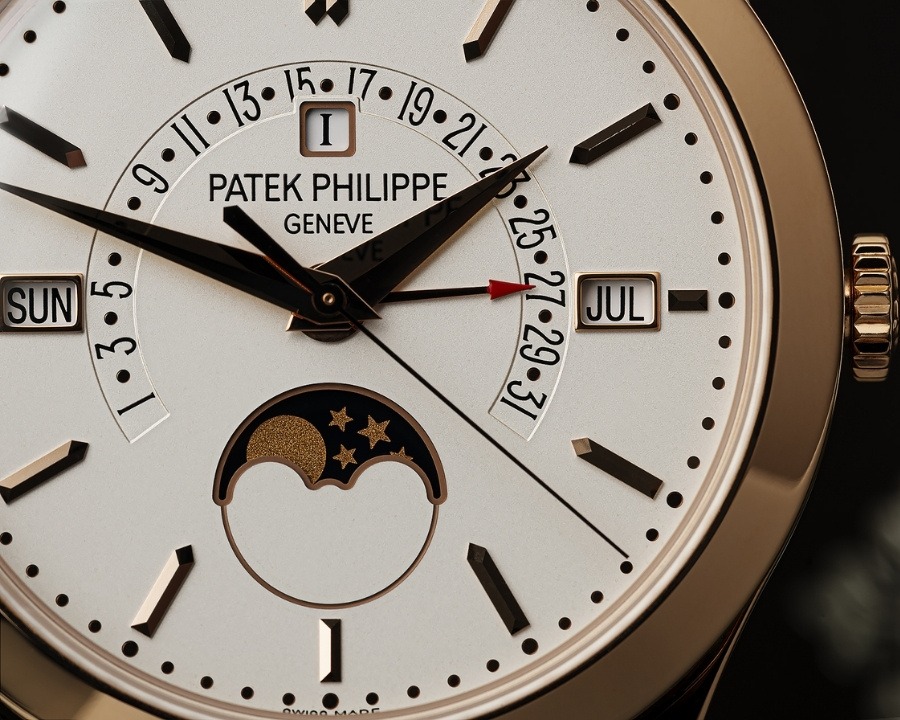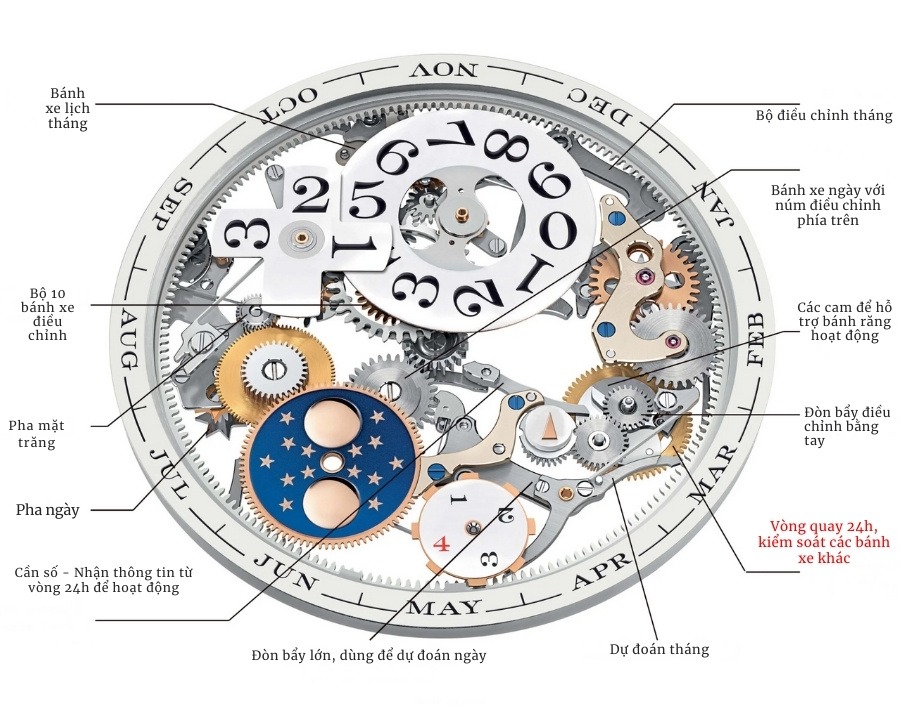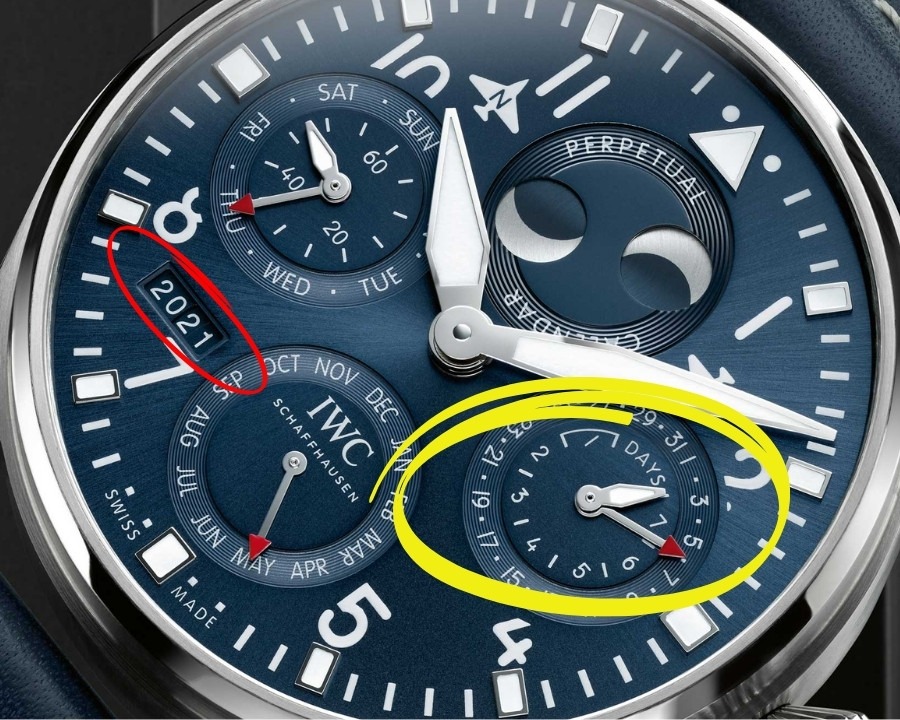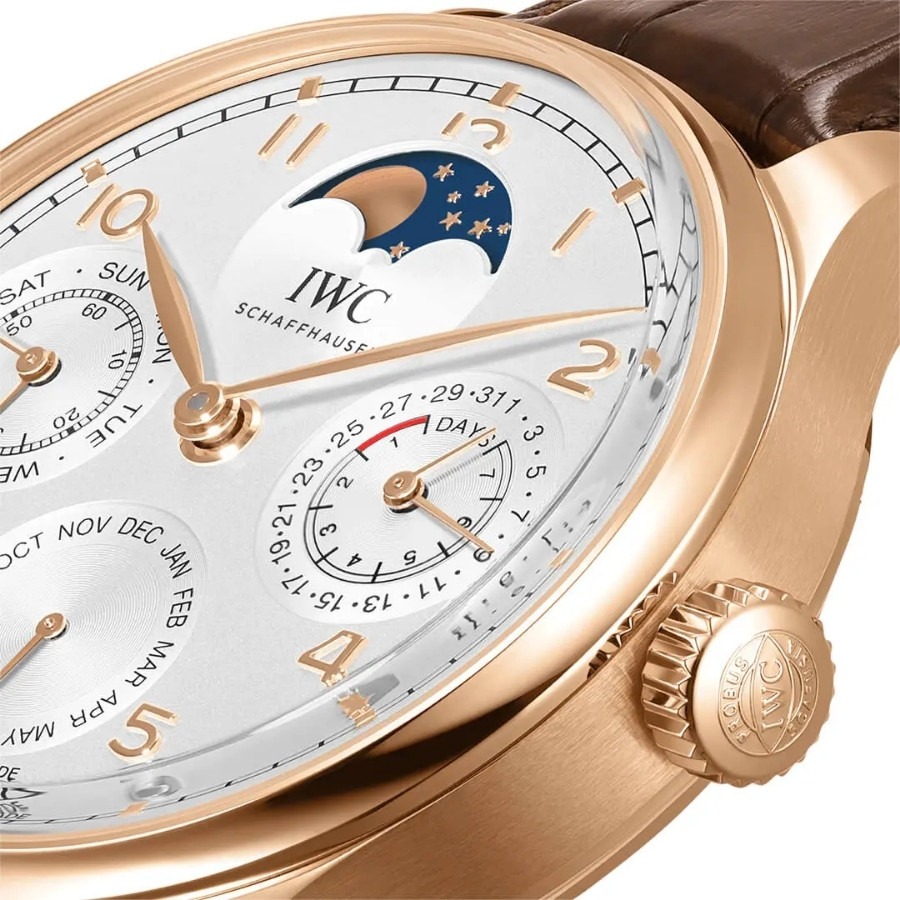Blog Replica Watch
What Is a Perpetual Calendar? Discover the Most Complex Calendar Mechanism in Watchmaking
The Perpetual Calendar – often referred to as the “eternal calendar” – is recognized as one of the most sophisticated and valuable complications in the world of luxury watches. Let’s explore its mechanism, history, and outstanding features with King Replica!
What Is a Perpetual Calendar Watch?
A Perpetual Calendar is a watch mechanism that automatically adjusts the date accurately, taking into account the different lengths of months and even leap years. Unlike regular date watches, no manual adjustment is needed.
Example:
-
The watch automatically recognizes and adjusts for months with 30 or 31 days, and for February with either 28 or 29 days.
-
You would only need to manually adjust the calendar once after about 100 to 122 years!
How Does the Perpetual Calendar Mechanism Work?
The Perpetual Calendar is based on the ancient Julian calendar, which calculated a year as 365 days plus a quarter of a day. Every year, the mechanism “saves” a quarter day, and after four years, it automatically adds an extra day (February 29).
At the heart of this mechanism are:
-
A Cycle Wheel that completes one rotation every four years,
-
A sophisticated system of gears and levers,
-
A mechanical memory that tracks the 1,461-day cycle (4 years).
Thanks to this ingenious design, a Perpetual Calendar watch can maintain perfect accuracy for centuries.
The History of the Perpetual Calendar
-
1762: The first appearance of the Perpetual Calendar in pocket watches.
-
1889: Patek Philippe introduced the first Perpetual Calendar pocket watch.
-
1929: Breguet launched its first Perpetual Calendar wristwatch.
-
1940s: A boom in collecting Perpetual Calendar watches began.
-
1960s: Mass production of Perpetual Calendar watches started.
Example of a notable model:
-
Orient BA0001G10B, a famous watch equipped with a Perpetual Calendar function.
Key Advantages of Perpetual Calendar Watches
-
Automatic Date Adjustment: No need for manual correction, even in months of varying lengths and during leap years.
-
Extreme Accuracy: Minimal deviation, capable of operating flawlessly for over 100 years.
-
High Technical Value: Considered a “Grand Complication” alongside the tourbillon and minute repeater.
-
Collector’s Value: A symbol of the highest level of watchmaking craftsmanship, highly sought after by collectors.
Structure of a Perpetual Calendar Mechanism
Main components include:
-
Date Wheel: Displays the day of the month.
-
Month Wheel: Advances with each new month.
-
Day of the Week Wheel: Present in high-end models showing the day of the week.
-
Grand Levier (Large Lever): Synchronizes all parts to ensure perfect accuracy.
Perpetual Calendar vs. Annual Calendar
| Criteria | Perpetual Calendar | Annual Calendar |
|---|---|---|
| Self-Adjustment | Fully automatic, including leap years | Requires manual adjustment once a year (February) |
| Complexity | Very high | Moderate |
| Value | Extremely high, made for top collectors | More accessible |
| Adjustment Interval | Only once every 100+ years | Once every year |
Additional Note:
There is also a Triple Calendar (Day-Date-Month Calendar), which requires manual adjustments several times a year.
Variations of Perpetual Calendars
1. Date and Month Display
The mechanism accurately counts the days in each month and automatically adjusts the date, often shown in separate windows on the dial.
2. Week and Day Display
Some Perpetual Calendar watches also display the week number or the day of the week.
3. Moonphase Feature
High-end variations incorporate a Moonphase sub-dial, typically positioned at 6 o’clock, adding an artistic touch to the design.
FAQ about Perpetual Calendar Watches
1. Do Perpetual Calendar watches need manual date adjustment?
→ No, they only require adjustment after more than 100 years.
2. Why are Perpetual Calendar watches so expensive?
→ Due to their extreme technical complexity, long production time, and the need for master-level craftsmanship.
3. Who should buy a Perpetual Calendar watch?
→ Enthusiasts who appreciate exceptional watchmaking, collectors of complicated timepieces, and investors seeking long-term value.
You Might Be Interested in Replica Watches:
100+ High-End Hublot Replica Watches at ZuLi Watch
100+ High-End Rolex Replica Watches at ZuLi Watch


 Tiếng Việt
Tiếng Việt




